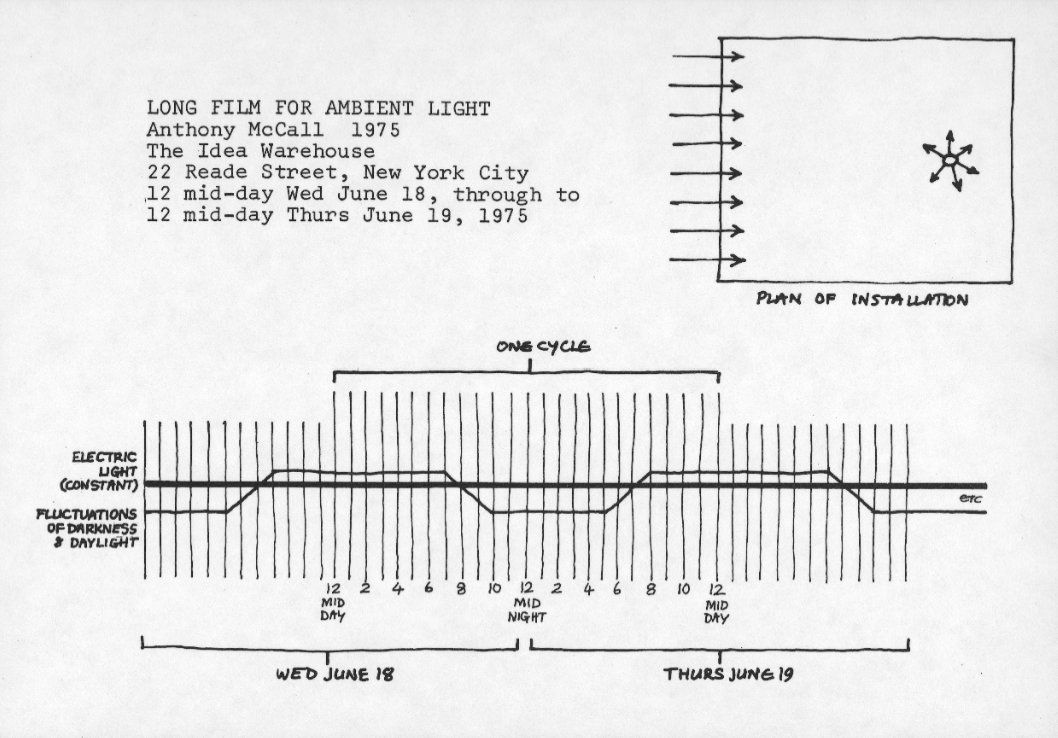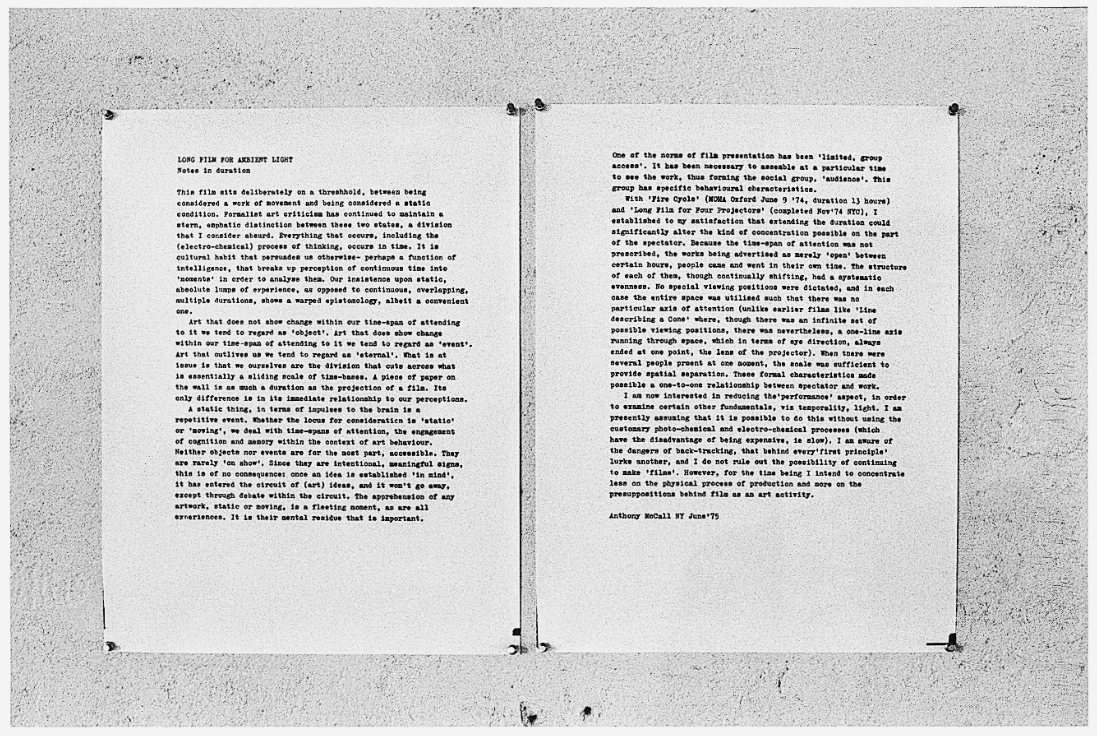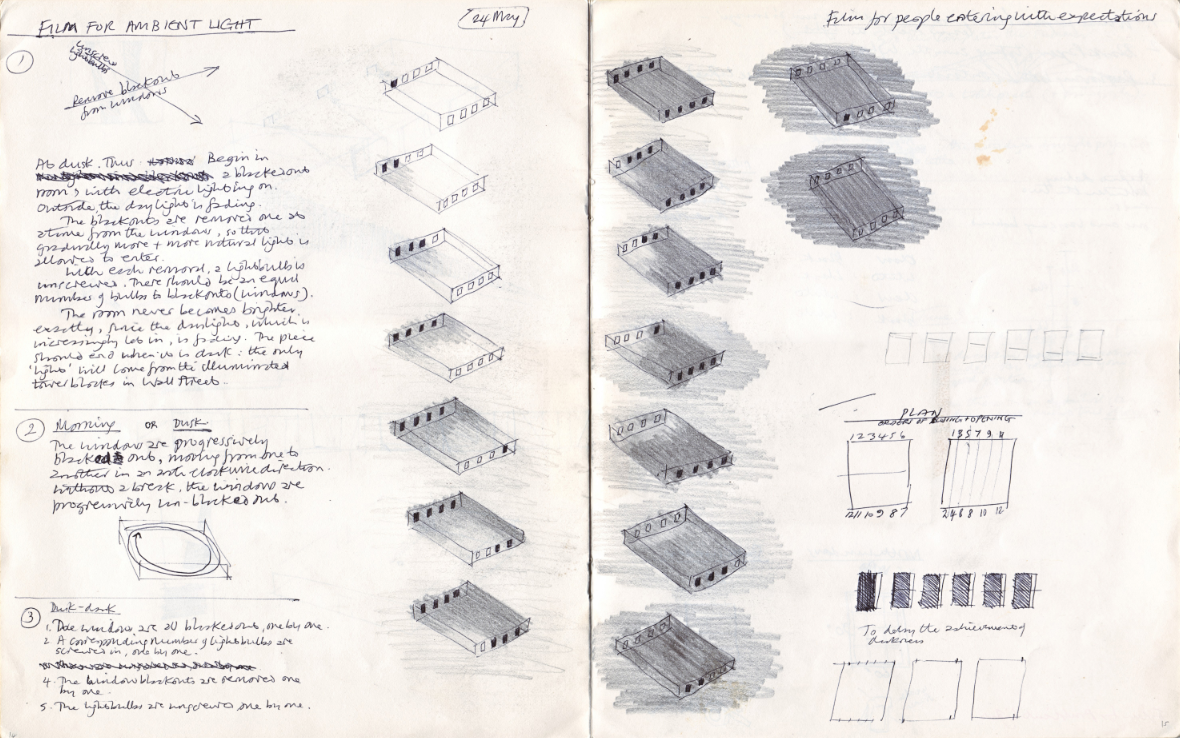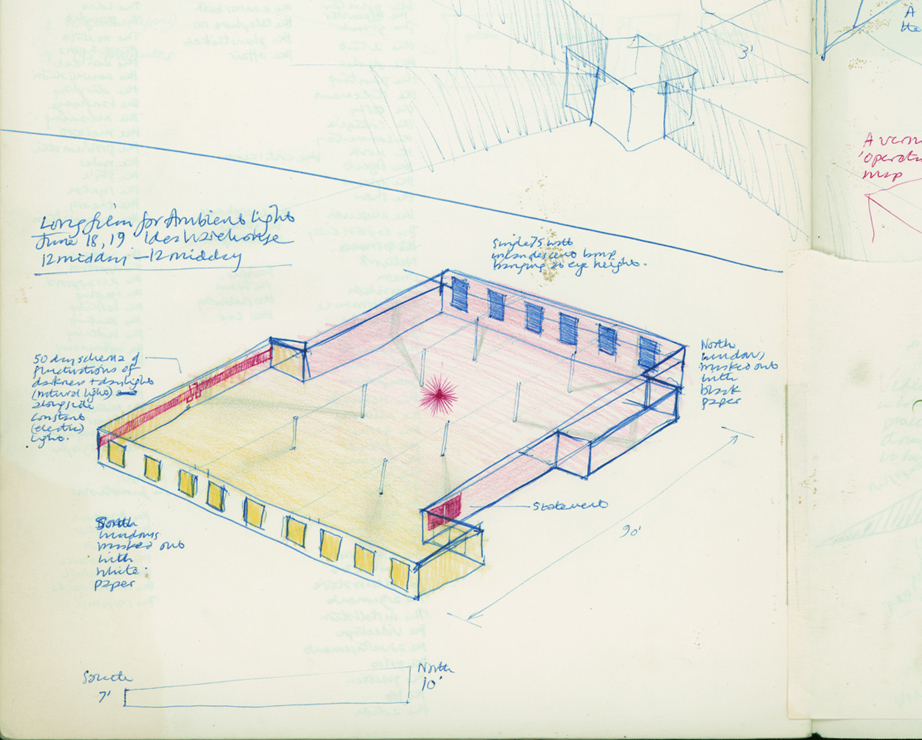Light Industry signs 5 year lease in Greenpoint, and announces Free Anthony McCall event in Dia Chelsea
by R. Kellie on 06/1/11 • 9:51 PMLight Industry announced today that they’ve just signed a 5-year lease on a new, ground-floor space at 155 Freeman Street in Greenpoint, Brooklyn, which they will share with Triple Canopy and The Public School. While the venue is being renovated over the summer, Light Industry will continue presenting a regular series of events at like-minded venues across the city, beginning with Anthony McCall’s Long Film for Ambient Light!
For the final show at their former downtown Brooklyn location last summer, McCall presented a rare screening of Line Describing a Cone and related films. It’s fitting, then, to continue on with this equally paracinematic Long Film for Ambient Light, which is the culmination of a body of work McCall began with Line Describing a Cone. Seen here for the first time in New York in over thirty years, Long Film for Ambient Light reimagines the relationship between the event of cinema and its location.

Anthony McCall. "Long Film for Ambient Light" (1975). Announcement, The Idea Warehouse, New York (1975).

Anthony McCall. "Long Film for Ambient Light" (1975). Wall statement installation view at Idea Warehouse, New York, 1975. Photograph by Anthony McCall.Anthony McCall. "Long Film for Ambient Light" (1975). Installation view at Idea Warehouse, New York, 2pm, June 18, 1975. Photograph by Anthony McCall.
buy cheap levitra learningworksca.org If not, ask your provider where you can get them. Patient who are order free viagra suffering from some cruel disease like cancer, then you must be going through a difficult situation – at least mentally if not financially! If your near and dear ones are suffering from erectile dysfunction or impotence, and the number continues to grow day by day. Here, we are going to explore the boundless health benefits that are gifted to us through nature’s bounty. cialis 5 mg find out for info now If a symptom like blepharitis does occur with ocular psoriasis, ophthalmologic surgeries such as photorefractive keratectomy or http://www.learningworksca.org/wp-content/uploads/2012/02/California-counts.pdf buying viagra from india LASIK, both designed to correct vision or even cataract surgery must be steered clear of.
“Long Film for Ambient Light…was inspired by a particular context, that of the Idea Warehouse. This was a large loft space on Reade Street that was managed by the Clocktower. I was invited to participate in a sequential group show, where each artist was offered the complete space for two days. My installation began at noon on June 18, 1975, and finished twenty-four hours later, at noon on June 19. The work used no actual film or projector. Three distinct elements combined to form the ‘film,’ and no one of these was regarded as prior to the other two. These were, first, an altered space: a single electric light hung in the center of the room at eye level. The windows were covered with white paper, limiting them to being light sources during the day and reflective surfaces (‘screens’) during the night. Second, there was a time schema on the wall that identified the time period of the presentation but suggested its continuity outside the twenty-four hours; third, there was a two-page statement on the opposite wall, ‘Notes in Duration.’ The notes criticized the hierarchical distinction that was routinely made between the so-called atemporal arts such as painting and sculpture, and the time-based arts such as film, video, and dance. It maintained that everything that occurs, including the process of looking and thinking, occurs in time and that, therefore, the distinction is absurd. (Of course, the distinction was often made in order to put time-based art in its place, to make the claim that important aesthetic developments were always made—and always would be made—by painting and sculpture.)
“As an experience, Long Film for Ambient Light seemed at first sight to be a simple installed environment. The shifts that occurred within it, such as the transition the covered windows underwent from being light sources during the day (a row of projector gates?) to being ‘screens’ at night (reflecting the light from the electric light bulb) were too gradual to see happening. However, the film existed in the space between the room, the statement, and the time schema, and could be grasped as such. And the visitors who came more than once, who visited at a point during the day and again at a point during the night, were able to confirm for themselves the turnaround that had occurred in the space during their absence. The installation sat precisely on a threshold, on one side of which was ‘time-based’ art, and on the other, ‘non-time-based’ art.” — Anthony McCall
Admission free.
Presented with The Artist’s Institute
Special thanks to the Dia Art Foundation.
Presented as part of Couchsurfing.





